A "Wii" minor development...
It’s been sensational experiencing Sony’s incredible new hardware for the last four months, with a revolutionary piece of tech that may define this generation for years to come. The Dualsense’s potential has yet to be fully realised, however a thought provoking situation had me ponder the integration of the controller’s immersive hardware. A conundrum began to beckon the question if third-parties were willing to support the controller’s respective features throughout the onset of the PlayStation 5’s life cycle. We’ve seen this dilemma in the past; a unique piece of hardware that poses a game-changing way we play, only for it to be labelled a “gimmick”, shelved by studios, and be forgotten within a wasteland of other examples. Time and time again, we admire gaming manufacturer’s for their innovation but never quite grasp the implications these features may carry.
The Wii Remote’s motion control was an instant classic, with a dynamic way to play video games. To mimic a tennis racquet, to spin a bowling ball, or swing your blade was a pipedream many of us had cognitively manifested in our subconscious on numerous occasions, before Nintendo made this concept a reality. The idea of mixing playstyles on the fly, from physical to stationary classified the Wii as a casual gamer’s console, with an audience that spanned from Children to parents, grandparents, and even pets. However, regardless of how popular the “gimmick” may have been upon its inception, the Wii’s gleaming feature gathered began to age, with the prominent mechanics introduced to the XBOX Market in the Mildly (an overstatement) successful XBOX Kinect – Microsoft’s failed attempt to recreate the Wii’s Motion Magic without the use of additional controllers.
A realisation had occurred from third party developers that fans were no longer interested in getting off the couch, rather creating compelling, cinematic productions to be controlled through traditional means. The PlayStation 3 boomed in this period, due to successes of Uncharted 2: Among Thieves, altering the industry and how the gaming universe was once again shifting towards a new niche. With Nintendo’s seventh generation home console clinging on for dear life, few examples of exclusives to tiny white tower were doing their best to elongate its lifespan. The Goldeneye franchise’s re-emergence lured fans in for an action packed, first person shooter that reimagined the 1997 Bond Classic, along with Retro Studios’ Donkey Kong Country Returns; both releases making minimal to no use of Wii’s imposed gyroscopic mechanics.
The Wii’s ceremonious lifespan came to a quiet end in 2011, after Nintendo’s last ditch effort in re-releasing the Wii Remote with the Motion Plus attachment, which later was built-in for two specific releases; Wii Sports Resort, and The Legend of Zelda: Skyward Sword (and we know the legacy each title carries). The PlayStation brand were recouping from a disastrous PS3 launch, capitalising on a momentous opportunity in the Wii’s twilight phase. While the fad of motion controls began to dwindle, Sony Interactive Entertainment – Now PlayStation Studios – commenced their investment in action-adventure platformers, that indeed saw a major turnaround for the once poorly prophesised PlayStation 3. First party development from an illustrious line-up, saw the platform take on a new life in inFamous, Uncharted, God of War, Demon Souls.
The Dualsense is already leaving an everlasting impression on the competition, with XBOX enquiring fans if they would love to see their controller revamped with features seen in PlayStation 5's revolutionary hardware.
An immeasurable amount of potential sought the PS3’s uprising which of course lead to the PlayStation 4’s unequivocal success. But winding a peg, it wasn’t all sunshine and rainbows for the PlayStation brand as they had unfinished business in the handheld market. The dollar signs were shining ever so bright off the back of the Nintendo 3DS’ success, another gimmick that fell by the wayside halfway through its dominant cycle, but that’s a story for another day. The PlayStation Vita made a ripple within the mobile market, to a lukewarm reception. They had the properties to institute themselves as real competition, but once again the gimmicks implemented – such as the back touchpad, the in-built camera, the touch screen – saw their untimely demise after each feature was poorly received in Bend Studios’ Uncharted: Golden Abyss. Moments of compulsory usage were criticised and the backlash lead to Sony themselves dropping support for their own hardware, rather opting to port its legacy title’s and promote the unit as an Indie arcade.
Now we come to a potential inquisition, where we ask if third-party development teams are willing to go the extra mile while developing their wares to publish games with haptic feedback, all programmed specifically for one platform? We’re in the honeymoon phase of current gen platforms, and are only now familiarising ourselves with these unique facets and features, that promise to engage and compel us in ways unimaginable, and so far, the PS5 has most certainly delivered on this stance. While adaptive triggers and haptic feedback/3D Rumble are only minor adjustments from the aforementioned mechanics, investment in coding these key components do take time, and as old adage goes, time equals money. This of course is only an observation, an outsider looking in to equate the likeliness or probability of such a fate for the Dualsense’s embryonic stages.
A concern? Sure. But nothing that will cause a diversion, or immediately change the path that’s already dominated by its insane popularity. The Dualsense is already leaving an everlasting impression on the competition, with XBOX enquiring fans if they would love to see their controller revamped with features seen in PlayStation 5’s revolutionary hardware. Its a progressive insight to what Sony have now established and imposed upon the industry. Sure, each of the aforementioned “gimmicks” have been dissected and disassembled time after time, in leu of companies just missing the mark, but now a simpler feat indicates that Sony may have indeed struck gold with such inventive immersion. But let us not get too carried away, it will only be a matter of time before we see less and less of the haptics and adaptive triggers included within the foundations of third party titles, while first party PlayStation Studios’ will continue to unravel more of its astounding presence.

PlayStation 5 - Sony
AVAILABLE NOW ON:


